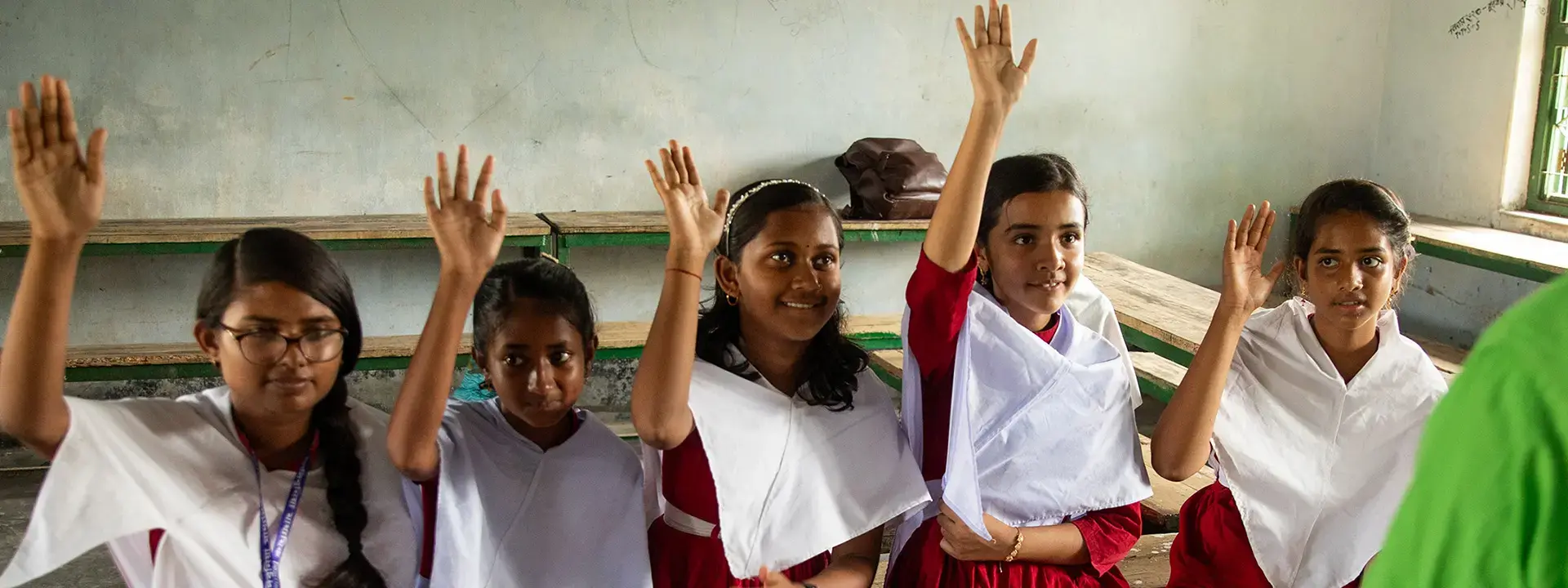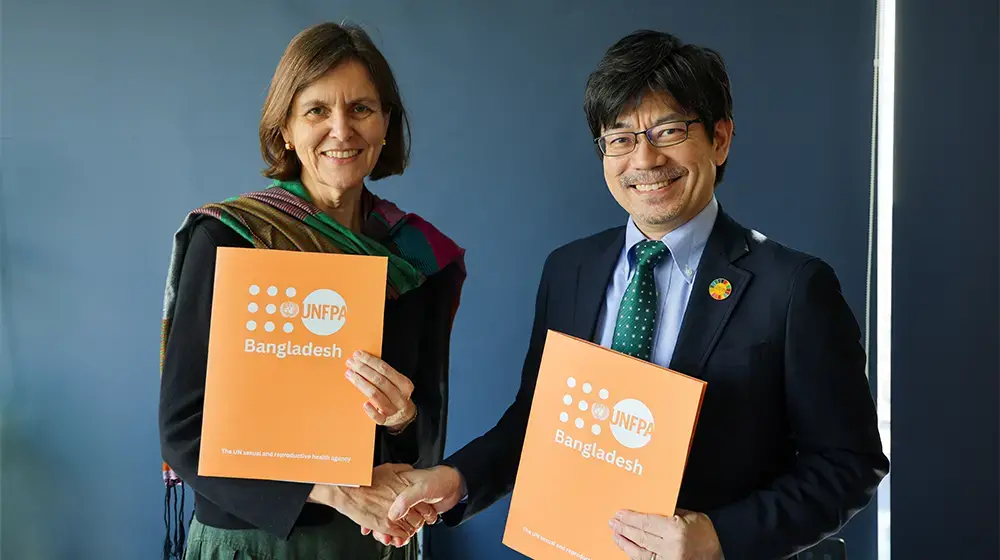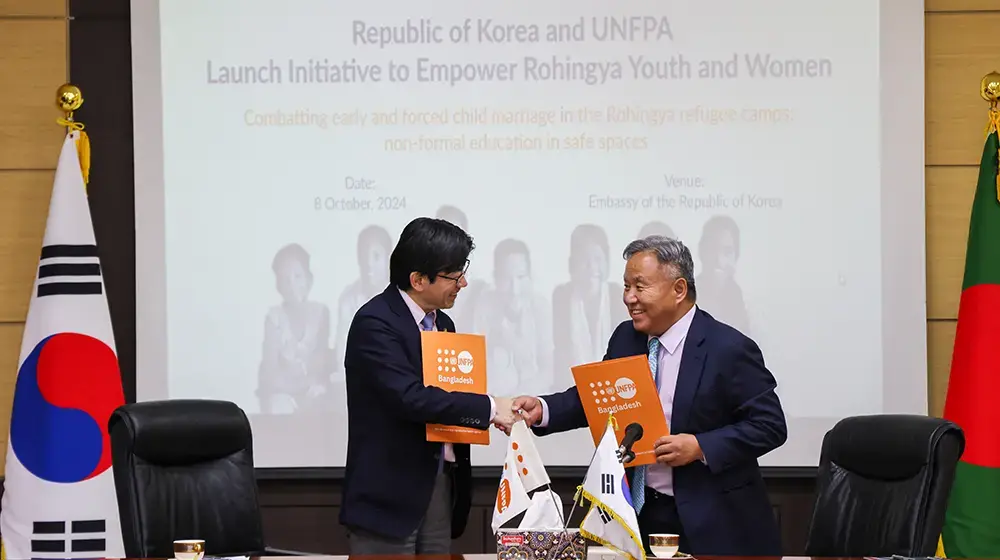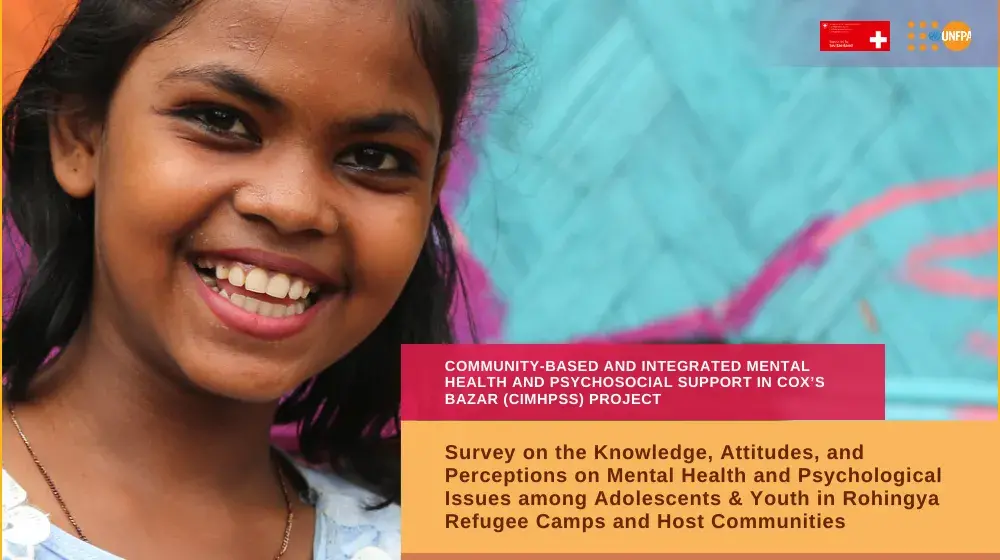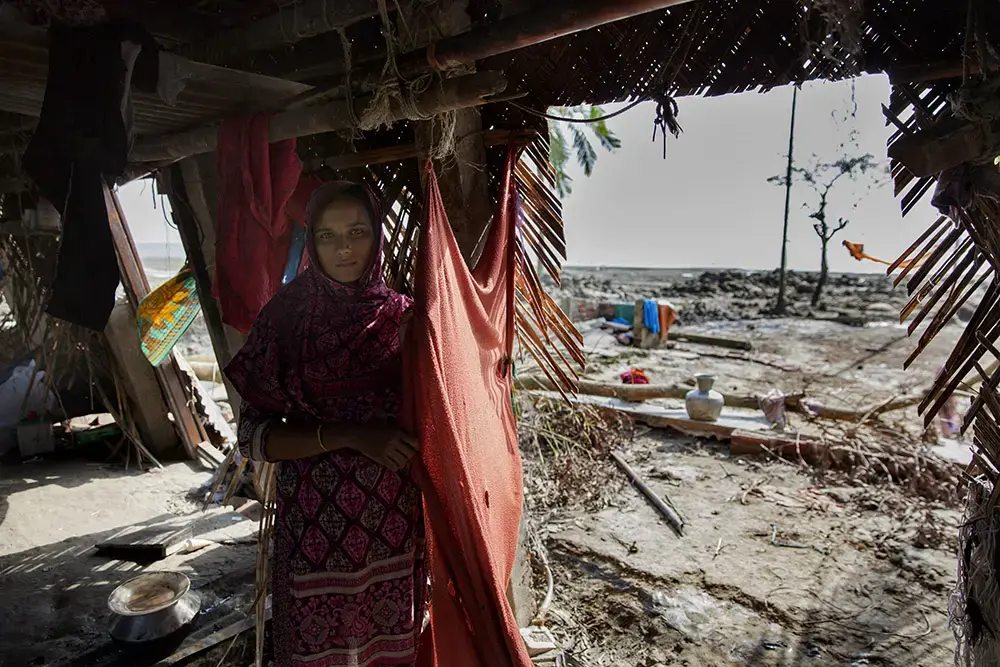Bangladesh has the highest adolescent pregnancy rate outside Sub-Saharan Africa. 113 out of 1000 teenage girls fall pregnant before the age of 19. The primary cause of adolescent pregnancy lies in the high rate of child marriage. Girls who are physically and emotionally not mature enough for pregnancy and childbirth have a higher risk of succumbing to maternal morbidities.
International evidence moreover shows that babies who are born to teenage mothers may have lower survival rates. More than 60% of all women between the ages of 24 and 49 were married before the legal age of 18. Married adolescents, moreover, have a higher unmet need for family planning and, thus, a lower Contraceptive Prevalence Rate.
UNFPA is working together with national partners to introduce a life skills-based curriculum in secondary schools in technical and vocational training centers and for out of school teenagers to provide them with information on sexual and reproductive health and rights.
Adolescent pregnancy
In Bangladesh, pregnancies among adolescents remain a significant concern, primarily driven by child marriage, cultural norms, and socioeconomic factors. Adolescence pregnancy or motherhood (23.7%, BDHS 2022) is primarily driven by the high rate of child marriage (50.1% in BDHS 2022) coupled with limited contraceptive utilization among young married females. Notably, premarital sex has emerged as an additional factor leading to adolescent pregnancy, with 27 percent of ever-married girls reporting premarital sex, giving birth to their first child within seven months of marriage (BDHS 2017-2018). The latest Bangladesh Urban Health Survey 2021 also refers to the increasing evidence of teenage pregnancy. Given this considerable demographic, the pressing issues of high unmet needs, inadequate data on sexual and reproductive health awareness, and limited knowledge on family planning services among both unmarried and married adolescent girls highlight the urgent need for investment in data to explore underlying causes, and ensuring access to family planning information and services.
UNFPA designed programme to make a significant contribution to progress towards achieving the SDG target to eliminate child marriage and reduce adolescent pregnancy, with a focus on enabling the most marginalized adolescent girls to live healthier, more empowered, and safer lives, including making their own life choices.
UNFPA also contextualizes SBC interventions with more intention on the deeply entrenched gender, social, and moral norms that govern girls’ mobility, freedom, and position in society. Additionally, it will promote girls’ self-efficacy to negotiate safe sex; empowerment of girls and boys to engage in healthy, safe, and consensual relationships; provision of accessible supportive services, including adolescent-friendly SRHR services, CSE in schools, and availability of contraception; dialogue between parents and their adolescent children.
UNFPA ensures support to the government for leveraging resources and enabling policy and programme environment with full support to implement the national strategy for adolescent health and action plan to focus on a comprehensive age-appropriate right-based SRH including family planning program in Bangladesh over targeted educational, preventive, and support interventions.
Adolescents and young people in the humanitarian context
Young people make up a large proportion of the country's population, and they become the most vulnerable in any crisis or disaster situation. Their needs also vary in terms of age, sex, gender identity and sexual orientation, health status, marital status, developmental stage, socioeconomic conditions, and environmental and other contextual factors. In humanitarian crises, especially in natural disasters, adolescents’ sexual and reproductive health needs are often overlooked, which makes them isolated from all the possible opportunities and basic health needs and more vulnerable as well as exposed to GBV and other life-threatening hazards.
Natural disasters heavily impact their access to reproductive health supplies forcing them to adopt unhealthy practices and negative coping mechanisms. Unavailability and inaccessibility of life saving information and knowledge are also reinforcing the continuation of harmful norms, and tendency of deprioritizing women and girls’ need in emergency. Adolescent girls are the most vulnerable in this case because of the inequality, discrimination, power relations, and poverty.
To address the most complicated needs of the adolescent girls in emergency, UNFPA offers menstrual health management kits to the disaster affected, vulnerable, and marginalized adolescent girls. These kits have been tailored to their specific needs of managing menstrual in a healthy and dignified way following the international guideline. UNFPA also provides adolescent girls with the life saving information and GBV referral services to make them resilient to disasters and its significant long lasting impact. UNFPA leads the flagship initiative of remote Mental and Health and Psycho-Social Support service through ‘Alapon Helpline’. UNFPA provides thousands of adolescent boys and girls with MHPSS services every year and addresses the severe needs of it during emergencies.
To empower the young people, UNFPA engages youth volunteers in every disaster response who closely work with the community as a voice of UNFPA. Youth volunteers have been mobilizing the community with the support from UNFPA during the preparedness phase as well. These trained and committed young voices have been playing the key roles to make a resilient and sensitized community.
UNFPA also works hand in hand with the government to address the gaps and key areas in the humanitarian response architecture focusing on adolescents and youth to integrate their needs into the humanitarian response planning to ensure a proper impactful response. Humanitarian Development Nexus approach is the key to strengthen the partnership and accountability mechanism in all the three phases of preparedness, response, and recovery model.

